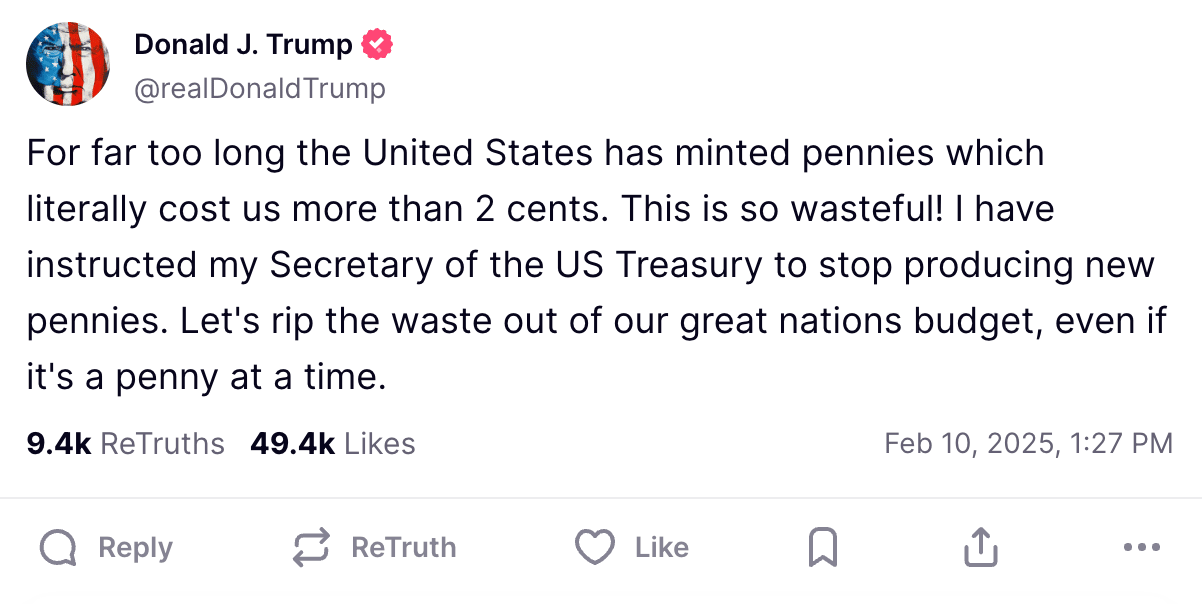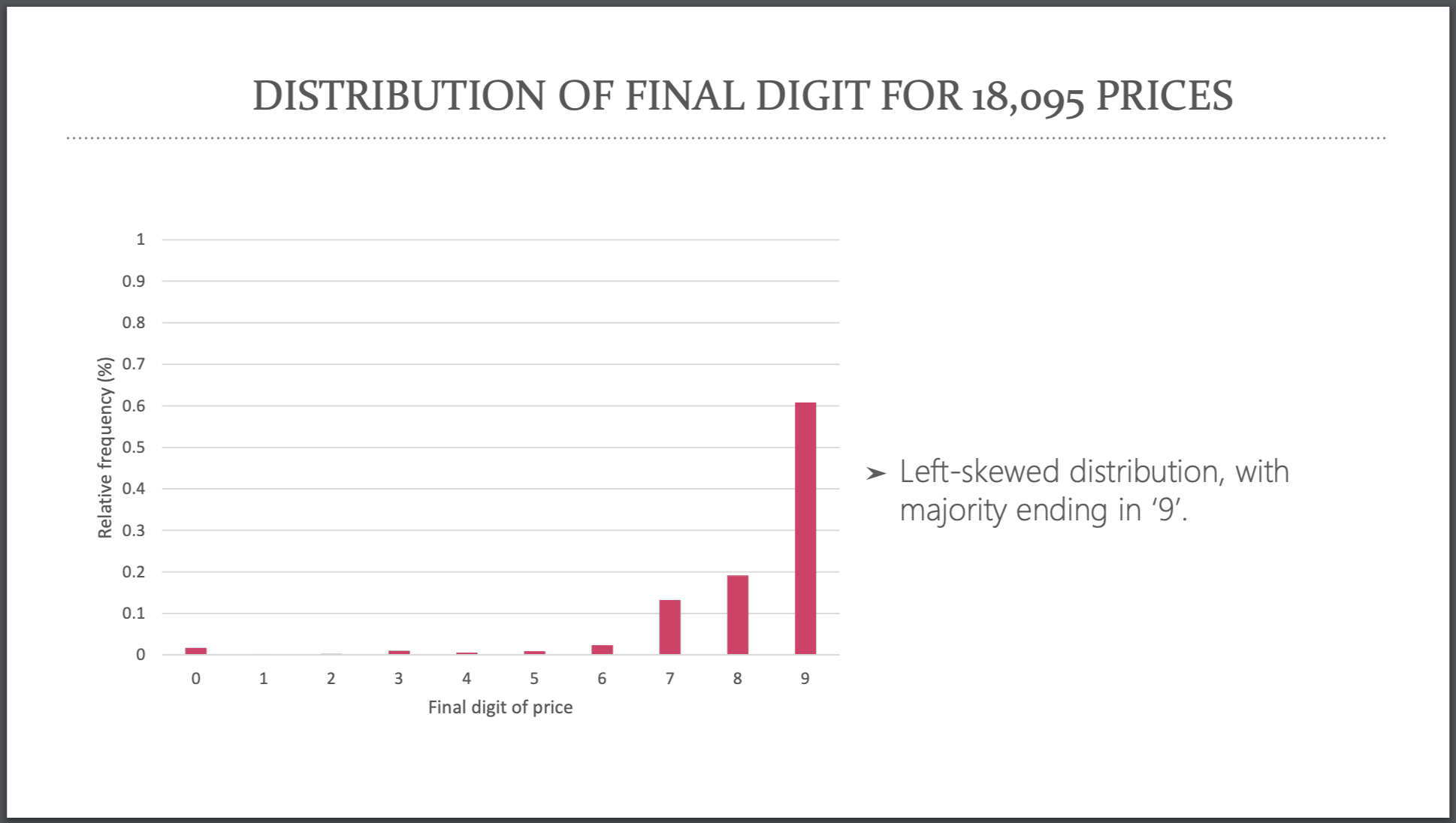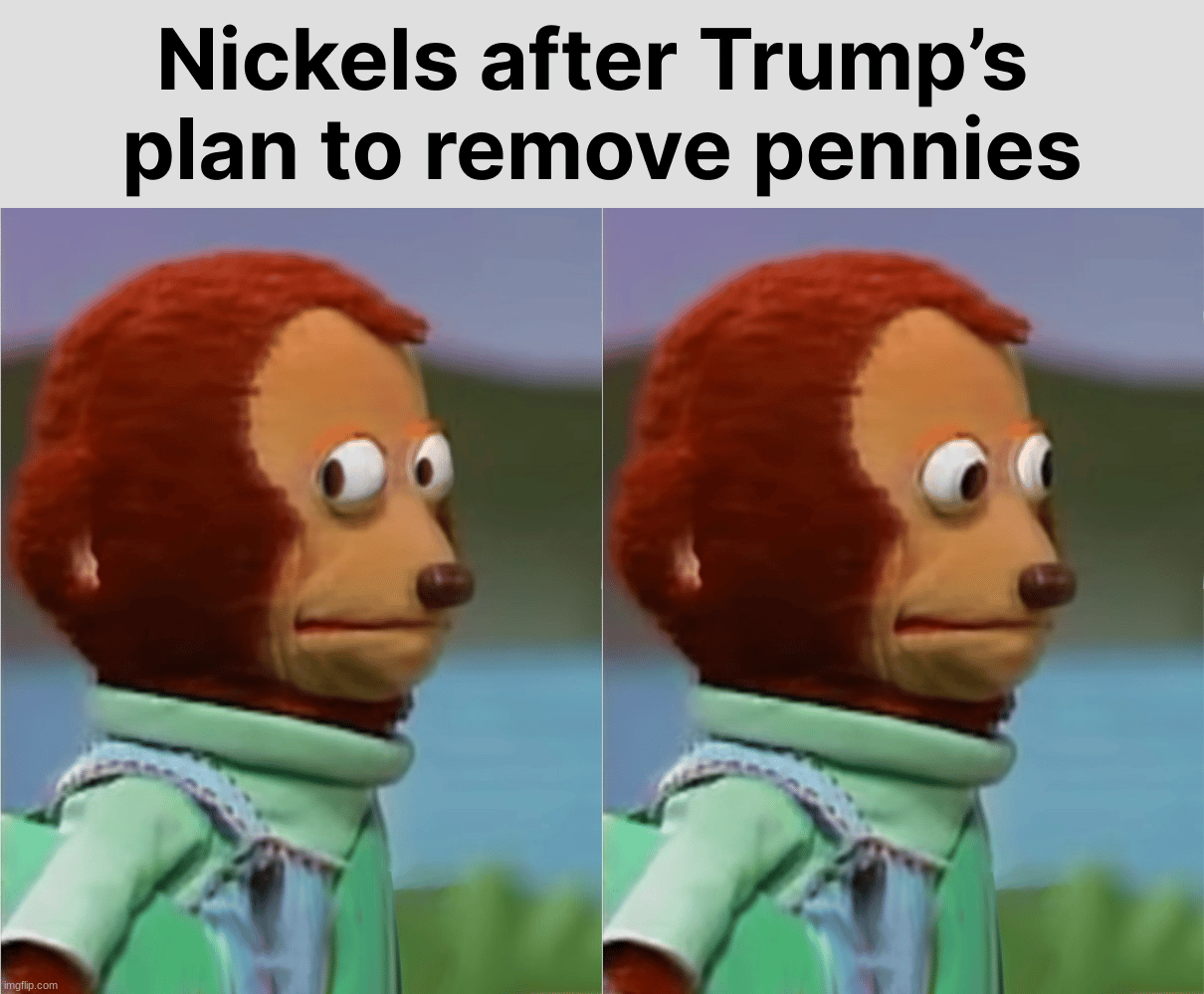Hey there! | Stocks & Income is proudly brought to you by Alts, the world’s leading platform for exploring and investing in alternative assets. | You may not realize, but on Sundays we publish very special, in-depth issues about alternative markets and under-discussed financial stories. | Past fan favorites include: Ghost Towns for Sale, The Incredible Story of Sealand, and Rebadging: The Auto Industry’s Little Secret | Previously, you have not been receiving these Sunday issues. Starting this week, I’ll begin sending them to you. I think you’ll really enjoy these. | Note: If you would prefer not to receive these Sunday issues, just click here. |
|
|
The penny no longer makes cents |
Hello and welcome to the Sunday Edition 👋 |
HHThe news these days feels like a million half-baked stories whizzing by. But one story that caught my eye this week is the potential elimination of the penny. |
When I first moved to Australia in 2005, one of the first things I noticed was that the country didn't have any 1-cent coins. |
"Oh yeah, we got rid of those years ago," my friends told me. |
"Cool. That makes sense!" I replied. |
I couldn't understand why America was still manufacturing these absurdly worthless coins. (And this was twenty years ago!) |
Fast-forward to 2025, and it looks like the penny's luck may have finally run out. |
In a move that's got efficiency lovers and numismatists buzzing, this week President Trump announced plans to halt production of the one-cent piece. |
|
Now, this makes for great headlines, and appears to be one of the few things Trump has said which nearly everyone seems to agree on. (Hallelujah! It's a miracle!) |
But like with everything these days, there is tons of confusion and speculation about what it all means. |
Today, we'll break down what's actually happening here: |
What's the elimination plan? (psst, there isn't one yet) How have other countries handled this in the past? How does "Swedish Rounding" work? Who benefits: consumers or retailers? Are nickels next? (they should be)
|
Let’s go 👇 |
The penny drops |
To be clear, there does not appear to be any detailed, official rollout plan for Trump's decision to ditch the cent. The announcement seems to have been made rather abruptly via his Truth Social platform: |
 | During a social media rant while watching the Super Bowl, Trump claimed he had ordered the Treasury secretary and former hedge fund manager Scott Bessent to halt production. |
|
Other posts seem to indicate that, over the next 18 months, the US Mint would gradually phase out penny production. Existing pennies will remain legal tender indefinitely, so you can still use them to buy...err, well, nothing. (Let's face it, nothing costs a penny anymore.) |
But plan specifics aside, the economics behind this decision are about as straightforward as you can get. Pennies are made from copper-plated zinc, and it currently costs about 2.06 cents to produce a single penny. |
You don't need to be Warren Buffett to see that's a losing proposition. |
 | Given current zinc prices, the US Government loses about $179 million on penny production. That's a lot of copper-plated zinc going down the drain. |
|
But the benefits of removing the penny go beyond just saving on production costs. The hidden costs & externalities have been nickel-and-diming Americans for years: |
Handling and distribution: Banks, retailers, and the Federal Reserve spend a substantial amount just moving these little Lincolns around. Environmental impact: Mining zinc and copper for pennies isn't exactly eco-friendly. Plus, many pennies end up not in circulation, but landfills (and of course the Trevi Fountain)
|
If Trump does have a plan, the logical next steps would be to work with retailers and banks to implement a rounding system for transactions. |
Of course, there is plenty of precedent here. Countries have been ditching their lowest denomination coins for years, and have had plenty of success. |
Let's explore some "penny-free economies" around the world to see what we can learn from them. |
The global trend of ditching small change |
Remember that scene in Office Space where they talk about the "take a penny, leave a penny" tray? |
|
Well, in many countries, this scene is as outdated as other 90s cultural relics, like floppy disks, dial-up internet, and CDs. (Wait, scratch that last one...CDs are making a comeback.) |
Let's take a tour of some penny-free countries: |
Sweden: The OGs of coin elimination 🇸🇪 |
Ever ahead of the curve, Sweden began phasing out its smallest coins back in 1972. That's right, they were ditching pennies before disco was cool. |
There was some initial hesitation from the Swedish public. Philip Mussell, long-time director of Token Publishing, offers some insight into the sentimental aspect: |
"A lot of people find that they are used to coins. They want that part of their heritage to remain." |
But by 2010, even the 50 öre coin was removed from circulation, and the move was met with public approval. A survey commissioned by Riksbank (Swedish national bank) found that two out of three Swedes considered the coin no longer necessary. |
Australia 🇦🇺 |
Australia kicked off its penny-pinching journey back in 1992, bidding farewell to both 1- and 2-cent coins. The transition was smoother than a kangaroo's pouch. |
In fact, it was so successful that in 2020, the head of Australia's national mint predicted a "graceful death" for 5- and 10-cent coins as well: |
We've worked on the basis that somewhere in the next five to 10 years, the 5 [and 10] cent coin will probably just cease to be used...I think over time, they will die naturally." - Ross MacDiarmid, CEO of the Royal Australian Mint |
 | This uncirculated Aussie 5-cent "Echidna" Coin is kind of badass! But it still costs Australia about 6 cents to make a standard 5-cent coin. Even upside down, those numbers don't add up. |
|
New Zealand 🇳🇿 |
The Kiwis beat Australia to the punch by removing 1- and 2-cent coins in 1990. And they took an even bolder step in 2006 by eliminating their 5-cent coin. |
Interestingly, the removal of the 5-cent coin was primarily due to inflation. The NZ Reserve Bank stated that inflation had lowered the value of the five-cent coin to the point that it had become a nuisance with little practical worth: |
"Due to past high inflation, our 5c coin is now worth less than half what 1c was worth back in 1967. [This gives] New Zealand a coherent and logical set of coins that would be more convenient for the public, easier for those handling coin in bulk...and less costly to manufacture, saving about $2 million annually." |
Canada 🇨🇦 |
America's neighbors to the north gave the penny the boot in 2012. |
Today, rounding to the nearest 5 cents is as Canadian as maple syrup and apologizing unnecessarily. As one Canadian shopper quipped, "We've gone from penny for your thoughts to a nickel for your notions." |
They implemented a clever consumer education program to gently ease the transition, proving that Canadians are as polite about currency changes as they are about everything else. |
But this brings up a good point: What are the actual mechanics of removing pennies? How are cash & electronic transactions handled? |
Let's dive into the nitty-gritty of how countries handle pricing without pennies. |
How does pricing work without pennies? |
So, you've ditched the penny. Great! But now what? How do you handle those pesky $9.99 price tags? |
The rounding game |
Most countries that have eliminated 1-cent coins use a system called "Swedish rounding" (yes, named after those trend-setting Swedes). |
Here's how it typically works: |
Prices ending in 1-3 round down to 0 Prices ending in 4 round up to 5 Prices ending in 5 stay the same Prices ending in 6-7 round down to 5 Prices ending in 8-9 round up to 10
|
Rounding is only applied to the total bill. Prices of individual items don't need to be changed. |
For example: |
|
You may notice that this sort of rounding system should actually give an ever-so-slight advantage to the consumer. |
The decision to round 3 and 7 down instead of up favors consumers (and probably helps governments sell the idea to the public.) |
Cash vs card transactions |
Here's where it gets interesting. In most countries, rounding only applies to cash transactions. If you're paying by card (about 2/3rds of all retail transactions in the US), the exact amount is typically charged. |
This led to some initial concerns about businesses potentially gaming the system. What's to stop a store from pricing everything to end in 8 or 9 cents to "game the system?" |
Well, two things. First, most data shows that the average number of items purchased at US retail outlets is between 1-2 items. |
And second, in theory good old-fashioned market competition should kick in. If stores price everything to round up, shoppers would notice this blatant attempt to manipulate prices and could choose to shop elsewhere. (Ahem, right, ok) |
Who benefits: consumers or retailers? |
Now, the expectation here is that rounding up and down will balance out in the end across billions of transactions. |
However, a Canadian study found that penny rounding has in fact resulted in additional revenue for grocery stores at the expense of consumers. |
According to the study by Christina Cheung, a UBC student, penny rounding imposes a "tax" of approximately $3.27 million annually from Canadian consumers to grocery vendors. |
Not a huge amount per person, but still — food for thought! |
 | Christina's study, which was cited by the Bank of England, suggests that rounding practices cause consumers to pay slightly more, not save money. |
|
Electronic transactions are different |
When it comes to online purchases, most countries have opted to keep the cent as a unit of accounting, even if the physical coin doesn't exist. The exact total gets debited from your account, just as expected. |
This concept also includes physical transactions paid electronically. All electronic transactions can still be precise to the cent. Your $4.99 latte won't suddenly cost $5.00 if you're using your card. |
For example, in Australia, your total grocery bill at the register might be $43.52. If you pay by card, that's exactly what you'll be charged. But if you decide to use cash, it'll round down to $43.50. (Two cent savings — hooray!) |
Unlike the US, in Australia, prices are tax-inclusive, meaning the displayed price always includes the Goods and Services Tax (GST). Rounding occurs on the final price. It's the very last step after tax has been included. |
In Sweden, cash payments are rounded to the nearest whole dollar (Krona). |
 | The 1 Krona coin is now Sweden's smallest denomination. It's worth about ten US cents, and shows the bust of Carl Gustaf — the longest reigning monarch in Swedish history. |
|
New Zealand uses a rounding system with 10-cent intervals: |
Prices ending in 1 to 4 cents are rounded down Prices ending in 6 to 9 cents are rounded up For prices ending in 5 cents, it's at the discretion of the business, but the majority of retailers follow government advice and round it down
|
Closing thoughts: Are nickels next? |
Trump's announcement is long overdue, but it feels like finding a penny on the sidewalk – slightly surprising, maybe a little exciting, and mostly anti-climactic. |
For the record, I am absolutely a fan of this move. In fact think it's one of the few sensible ("cents-ible"? sorry sorry) proposals I've heard come out of America lately. |
History has shown that once a low denomination coin has outlived its usefulness, there doesn't seem to be any significant negative effect of phasing it out. |
If this does go through, it will be interesting to see how the US handles coins in circulation. Some countries keep the currency going for years, but it appears Sweden's 50-öre coin ceased to be valid immediately upon its removal! (And the Riskbank does not redeem them — they're as good as scrap metal.) |
But the other thing I'm interested in is to to see what happens with the US nickel. History has shown is that once the 1-cent piece has been removed, the nickel (or its equivalent) is next on the chopping block. If the penny goes, the nickel may soon follow. |
And get this: the nickel has even worse economics than the penny. According to the US Mint's 2024 annual report, each nickel costs 13.8 cents to produce! |
This is a 19.4% increase from the previous year, and is primarily due to the nickel's composition, which is 75% copper (?!) and 25% nickel, both of which are relatively expensive metals. |
 | The fate of the penny may be a harbinger of broader changes in US currency. Could this create a domino effect? Could the nickel be next? Could this push the US towards greater adoption of digital payments? |
|
In the meantime, as Americans move forward with a potential penny-free future, they can take comfort in knowing they're in good company. Change is inevitable, but in this case, it may just leave everyone a little richer. |
And who knows? Maybe one day, explaining what a penny was to our grandkids will be as quaint as describing a rotary phone or VCR. |
-- |
That's it for today. |
Chat with me in the Alts community |
See you there, Stefan |
Disclosures |
This issue was written and researched by Stefan von Imhof. This issue was sponsored by The EV Initiative This issue contains no affiliate links. Neither Alts nor Altea has any current holdings in any companies mentioned in this issue Stefan hasn't touched a penny in years
|
|